Keep your eyes healthy by learning the signs and symptoms of the most common eye disorders and diseases!
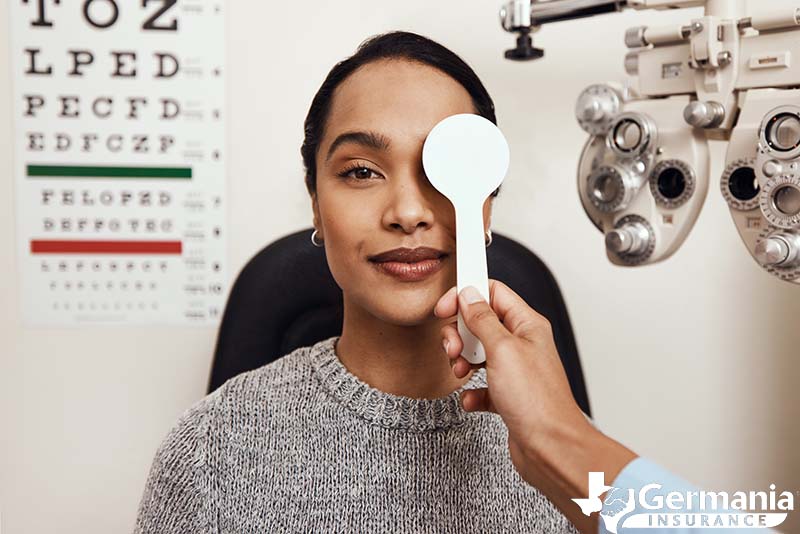
Have you ever found yourself in the position where you are squinting, struggling to see find your exit on the highway? Perhaps you find yourself scooting closer and
closer to your computer screen in order to read your emails. Or maybe you've noticed that the menu at the drive through has become increasingly difficult to order off of.
The problems caused by common eye disorders and diseases range from a slight annoyance to a life-altering problem, but catching certain conditions early on can help you prevent them from becoming severe. However, it can be difficult to spot the early stages of many problems, especially if you don't know what to look for. Although a comprehensive eye exam carried out by an optometrist is the only surefire way to detect them, you can stay ahead of the potential threats to your vision by learning about typical signs and symptoms.
August is National Eye Exam month, which is the perfect time to discuss the importance of keeping an eye on your vision! That's why today, we'll discuss the signs, symptoms, causes, and treatment for some of the more common eye disorders and diseases. Read on!
Anatomy of the eye
Throughout this blog, we'll use a number of terms when describing symptoms and causes of these eye problems. To help you understand what we're talking about specifically, it helps to be able to visualize the anatomy of your eye!
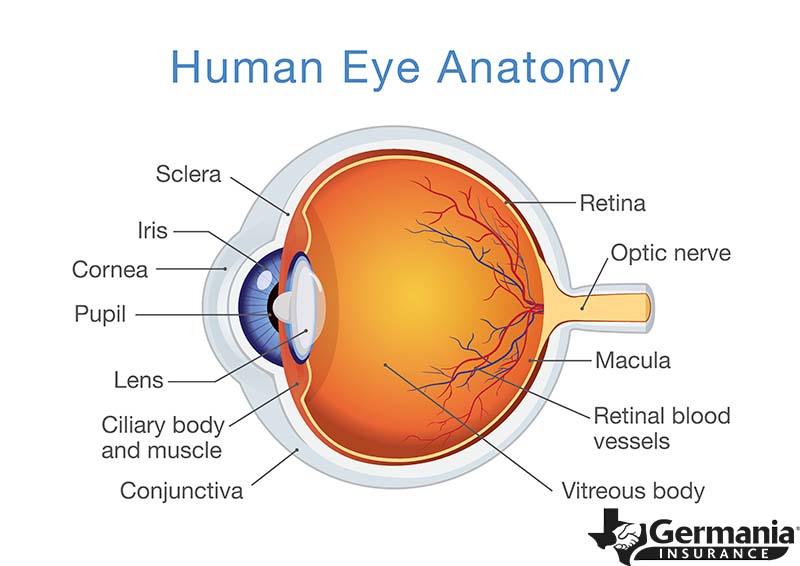 Cornea.
Cornea. This is the clear or transparent tissue in the front of the eye.
Iris. The colored part of the eye that surrounds your pupil.
Pupil. Similar to the aperture of a camera, the pupil is the dark hole in the center of your eye that regulates how much light is allowed into the eye.
Lens. A clear disk within the eye that focuses light onto the retina.
Retina. The layer at the back of the eye that senses the light, converts it into visual information, and sends that information to your brain through electrical impulses. The retina is similar to the film in a traditional camera.
Macula. This is a small portion at the center of the retina which that helps with high-definition vision and plays a key role in seeing colors.
Optic nerve. This is the channel through which electrical impulses containing visual information travel from your eye to your brain (specifically the visual cortex).
Vitreous body. The area of the eye filled with a clear gel between the cornea and the retina.
1. Dry eyes
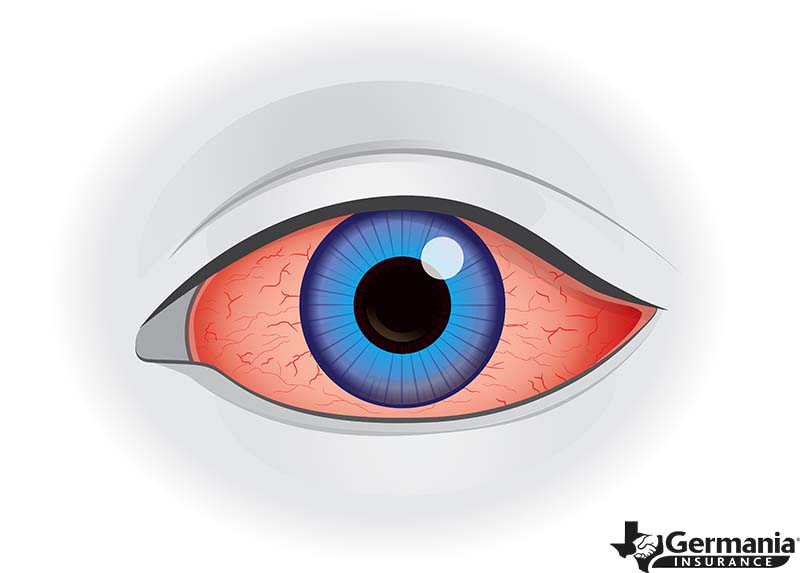
Healthy eyes need hydration and lubrication! Normally, your eyes are lubricated by tears, which are produced by tear ducts. Dry eyes is a condition that occurs when your eyes are not receiving proper lubrication, which can be the result of insufficient tear production, production of poor-quality tears, or rapid tear evaporation.
Keratoconjunctivitis sicca is the (complicated) medical term for decreased tear production. Although aging can cause decreased tear production, other common causes include:
- Medications, like antidepressants, blood pressure medication, birth control, antihistamines, and decongestants
- Damage from contact lenses or laser eye surgery
- Medical conditions, like sarcoidosis, thyroid disorders, vitamin A deficiency, allergic eye disease, rheumatoid arthritis, lupus, and Sjogren's syndrome
Common causes of increased tear evaporation include:
- Infrequent blinking, which can be caused by other conditions or diseases, like Parkinson's disease
- Problems with your eyelids
- Allergies
- Chemicals in some eyedrops
- Environmental factors, like smoke and wind
- Vitamin A deficiency
Having dry eyes can cause a range of symptoms, such as burning, itching, and redness. You may also find that you are more sensitive to light or that your vision is slightly blurry.
Although having dry eyes is usually no more than just a temporary discomfort, prolonged, chronic dry eyes can eventually lead to more serious problems, such as infections or damage to the eye itself.
Generally, dry eye treatment is as simple as using eye drops, or avoiding certain situations with environmental factors that can cause dryness or irritation. However, if the condition persists despite a lack of external causes, it is important to see a doctor to diagnose the specific cause.
2. Diabetic retinopathy
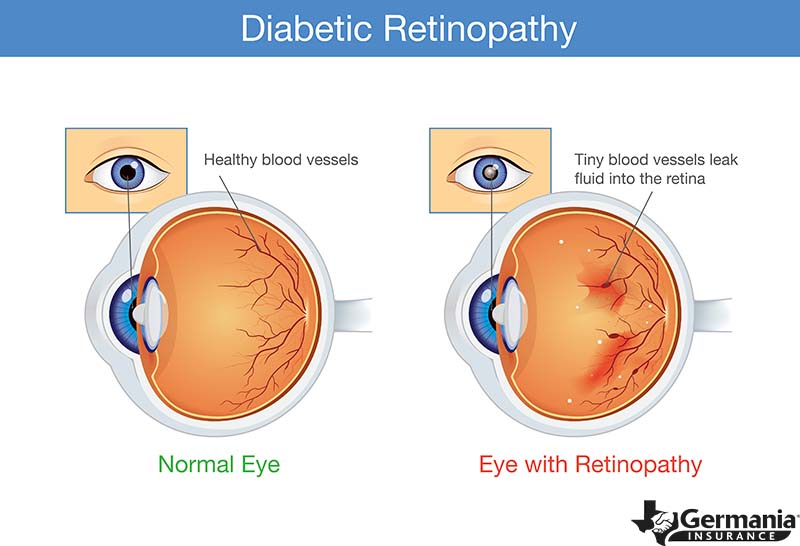
Diabetes can cause a wide array of secondary medical issues, although it is defined by an impaired ability to regulate blood sugar levels. Over time, high blood sugar can damage the small blood vessels attached to your retina causing them to bleed. As the supply of blood to your retina becomes impaired, new dysfunctional vessels may grow and can cause severe visual impairment known as
diabetic retinopathy.
Diabetic retinopathy may be difficult to detect early on, which is why it is important to schedule regular eye exams, especially if you have diabetes. If you notice any of the following symptoms, it is important to see a doctor as soon as possible:
- Floating spots in your field of vision
- Loss of vision
- Blurry vision
- Dark areas in your vision
Diabetic retinopathy can also lead to other serious eye disorders, such as certain types of glaucoma and even
retinal detachment. As the damaged blood vessels in the back of your eye heal, they can form scars which cause your retina to be pulled away from the back of your eye. Retinal detachment is a serious medical emergency and if left untreated, can lead to permanent loss of vision or blindness.
Early diabetic retinopathy can be managed by working with your doctor to manage the underlying diabetes. More advanced cases may be treated with certain medications, but sometimes surgery is needed.
3. Cataracts
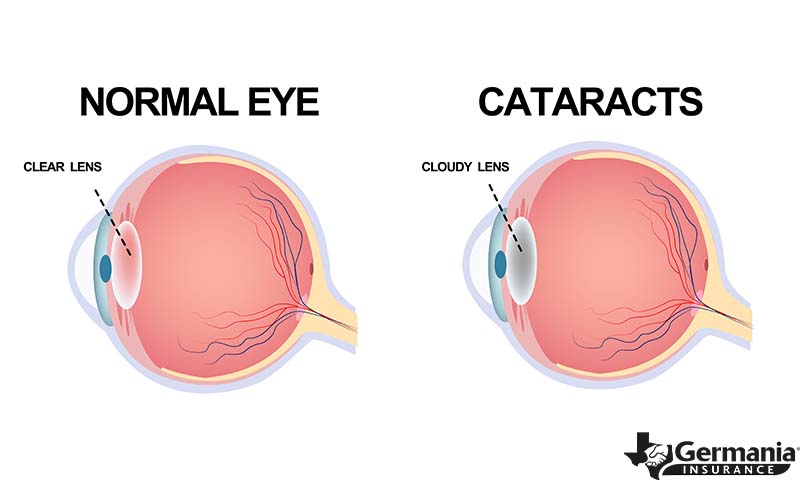 Cataracts are cloudy areas on the lens of your eye
Cataracts are cloudy areas on the lens of your eye. Because the lens of your eye is normally clear a cataract can obscure your vision, causing it to become blurry and eventually leading to blindness if left untreated.
Cataracts are the most common cause of vision loss and are most frequently a result of aging. This is because later in life, proteins in the lens deteriorate and accumulate, creating the cloudy area. However, injuries to your eyes can also cause cataracts to form as can other eye problems, like glaucoma.
Although anyone can develop cataracts, there are certain risk factors that can increase the probability that you will develop them at some point. Risk factors include smoking, excessive alcohol consumption, excess exposure to the sun, and a family history of cataracts.
The beginning stages of cataracts are categorized by mild symptoms, but if left untreated, it can eventually lead to complete loss of vision. Symptoms of cataracts include:
- Faded, clouded, or blurry vision
- Faded colors
- Poor night vision
- Double vision
- Halos around light sources
In the early stages, cataracts can be managed by using brighter lights at night, wearing sunglasses during the day, and by using reading glasses as needed. However, if the condition begins to interfere with daily life, surgery is likely needed. The process involves removing the cloudy lens and replacing it with an artificial lens. Fortunately, this is considered to be a very safe procedure and is almost always successful.
4. Glaucoma
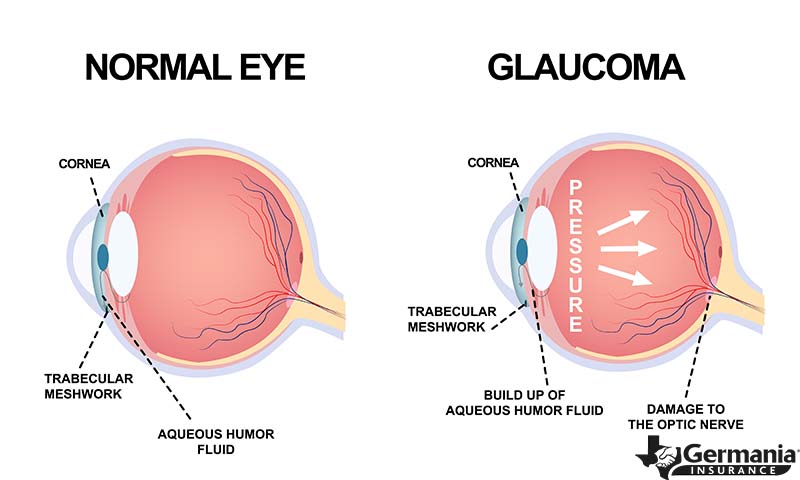 Glaucoma
Glaucoma actually refers to a group of eye diseases rather than a single disease. However, the most common type is known as open-angle glaucoma. Generally, this condition is caused by a gradual build up of pressure in the eye, which constricts and damages the optic nerve causing vision loss.
Perhaps one of the most dangerous aspects of glaucoma is that there are no real apparent symptoms early on, which makes it difficult to detect before serious damage has been done. Without symptoms, the only way to diagnose glaucoma is through a dilated eye exam.
When symptoms do set in, it usually begins with a decrease in peripheral vision, or the portion of your vision at the extreme edges. If left untreated, it can continue to progress until vision is completely lost.
Treatment for glaucoma will depend on how advanced the disease is. In early stages, prescription eye drops can help lower the pressure against the optic nerve. Doctors may also use laser treatment to help drain the fluid. This is a fairly non-invasive procedure and can usually be done in your optometrists office.
If surgery is required, there are
several options available, all of which are considered minimally invasive. The goal of the surgery is to create a way for your eye to drain the excess fluid that puts pressure on the nerve. This might be done by creating a small incision, but may involve implanting a small tube to assist the drainage. For some patients, the benefits of surgery last a considerable length of time. However, in some cases further surgery is required.
5. Age-related Macular Degeneration
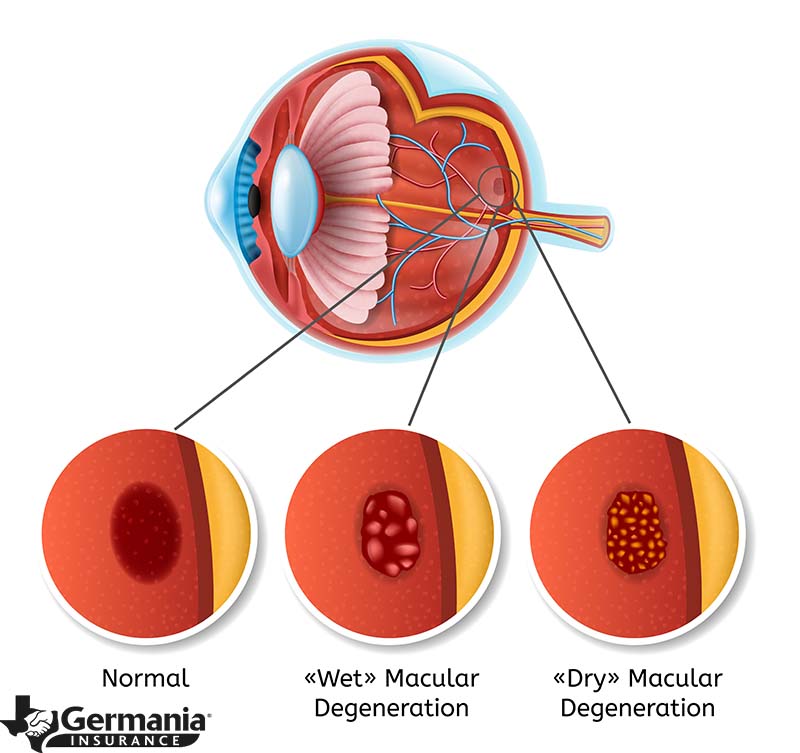
Macular degeneration occurs when a part of the retina, called the macula, is damaged in some way. The macula is only a small part of the retina, but is responsible for central vision and for the fine details in the images we see. There are two main categories of age-related macular degeneration (AMD): wet AMD and dry AMD.
Dry AMD is more common and occurs when the macula becomes thinner with age. Generally speaking, dry AMD can be divided into three categories: early, intermediate, and late stage. While there is no treatment for late dry AMD, there are steps you can take during the early stages to prevent it from progressing.
Wet AMD, also known as neovascular AMD, occurs when blood vessels grow from the back of the eye and damage the macula. Fortunately, there are treatment options available for wet AMD.
As with many eye disorders, the early stages of AMD have no apparent symptoms. Individuals in the intermediate stages may still exhibit no symptoms, but could potentially experience mild blurriness in their central vision, or may have trouble seeing in low light settings. For both wet and dry AMD, symptoms of the late stages include more significant blurring in the center of your vision, less vibrant colors, trouble with low light settings, and the sensation that straight lines begin to look wavy.
Neither wet or dry AMD results in complete blindness, but can significantly diminish your central vision. This makes many daily, routine tasks difficult, like driving, reading, focusing on close range tasks, and even identifying faces.
For both categories of AMD, early treatment may include
certain supplements to prevent it from progressing. Maintaining a healthy lifestyle is also an important part of prevention; eating healthy, exercising, and not smoking can go a long way towards managing AMD in its early stages.
Treatments for wet AMD are generally considered to be effective, and may include a series of injections, called anti-VEGF injections. This medication is the most common treatment for wet AMD and it works to stop the bleeding from the blood vessels in the back of your eye. Another less common treatment is called photodynamic therapy (PDT), which uses a special laser to break down the abnormal blood vessels responsible for the vision loss.
6. Refractive errors
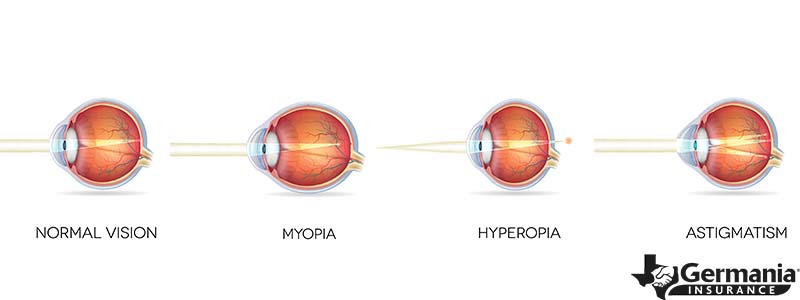
If you currently wear glasses, you more than likely have some form or fashion of refractive error.
Refractive errors are very common and can range from mild blurry vision to total visual impairment. There are several types of refractive errors, such as nearsightedness (myopia), farsightedness (hyperopia), and astigmatism.
Myopia occurs when your cornea has too much of a curve, or if your eye is slightly longer than normal. The result is that light is focused onto the front of your retina rather than in a precise location, which causes objects at a distance to appear blurry.
Hyperopia is essentially the opposite of myopia, and occurs when your cornea is curved too little or when your eye is shorter than normal. Light is then focused behind the retina, causing close objects to appear out of focus or blurry.
Astigmatism occurs when either your cornea or your lens has too much of a curve in a particular direction. This mismatch creates two points of light to overlap as they enter your eye, which results in a blurred image.
In all three cases, your vision becomes distorted or blurred, but you may also experience eyestrain or headaches from squinting and struggle to see images that are out of focus. Refractive errors can also make it more difficult to see at night.
Again, refractive errors are incredibly common and many people are simply born with eyes that are slightly misshapen. As you age, your eyes can gradually change shape, too, and either your cornea, lens, or both may curve to the point where you develop refractive errors later in life.
Fortunately, refractive errors are relatively easy to treat. Glasses and contacts are the most common treatments, but surgery, such as laser eye surgery, can be used to change the shape of your eye and correct the curve.
Eye disease and disorder prevention: Schedule your eye exam!
As with most medical conditions, identifying and diagnosing eye problems, disorders, and diseases is an essential first step. Although we have outlined signs and symptoms of some of the most common problems you're likely to encounter, the fact is that the early stages are difficult to detect without a comprehensive eye examination. For this reason, it's important to schedule eye exams in addition to your regular medical checkups.
Without any obvious signs or symptoms, younger individuals can get by with an exam every 5 years or so. However, as you age, it is recommended that you
schedule exams more frequently.
To determine how often you should schedule an appointment, take a look at the recommended eye exam frequency for your age bracket:
- Age 20-39: Every 5 years
- Age 40-54: Every 2 to 4 years
- Age 55-64: Every 1 to 3 years
- Age 65+: Every 1 to 2 years.
Booking a visit to your eye doctor every so often is just as important to maintaining a healthy lifestyle as making time for regular health exams or physicals. Whether or not you're experiencing symptoms of these common eye disorders and diseases, if you haven't had an exam in a few years, schedule one today!
 It's easy to see why Germania is the Insurance Texans Trust! To learn more about our products and services, request a quote online or reach out to one of our local agents today!
It's easy to see why Germania is the Insurance Texans Trust! To learn more about our products and services, request a quote online or reach out to one of our local agents today!